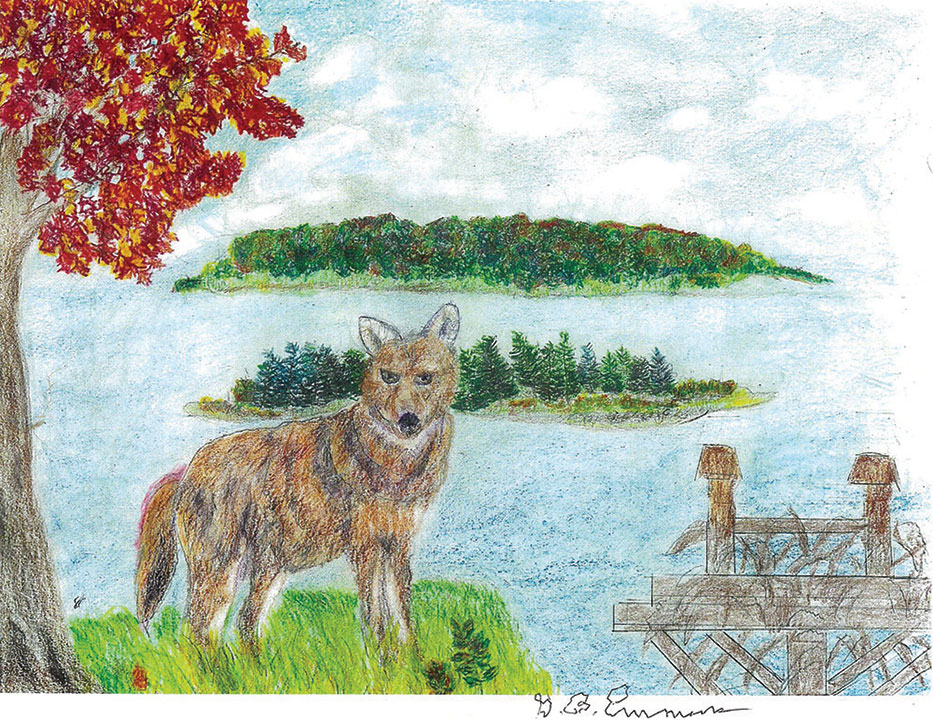The neighborhood Coyote often visiting our backyards and seen running along country roads in the headlights of our cars has evolved in crossbreeding to be as large today as a German Shepard dog.
The modern Coyote has become much bigger than the small, 25-pound western canine that we saw in a Walt Disney character cartoon. It was recently estimated to be 60% Coyote, 30% Canadian Brush Wolf and 10% dog and reclassified as a Coydog. Judging from the recent rate of growth, it soon will appear to be too close for comfort.
At the drop of a hat, the Coyote can move around at 40 miles per hour, adding habitat to 11 square miles in just a short time to adapt its diet to include rabbits, woodchucks, wild turkeys and feral cats. Unfortunately, it often includes pet tabbies and small dogs let outside for a brief opportunity to relieve themselves, making Coyotes very unpopular anywhere. The last Coyote den I visited included a wide variety of bits of fir and feathers, including white-tail evidence of deer fawns.
Just last week while looking out my back porch picture window on Little Bay in Fairhaven, I was astonished to see a very large Coyote looking back at me with a wild expression, not to be disturbed by his proximity. My illustration looking across at Ashley Island was also helped by my daughter Elizabeth, showing colorful deciduous autumn foliage of salty rust crimson and seaside burnt orange. Nearby is our wooden Osprey nest platform, abandoned last month to migrate south for the winter.
My nearest neighbors along Indian Way leading down to our beach report hearing howling at night of a family of Coyotes, starting out with a blood-curdling howl followed by a wavering harmony to another den far off in the distance. They seem to be inspired by a full October Moon rising over the horizon. Although their reason to sing seems to be a primitive mindset of orchestration, Coyote attacks on people are historically very rare and preventable by human caution and remedial behavior.
An angry, offended Coyote attack is often when being bitten by someone trying to rescue pets from attack or being fed by someone. Under no circumstance is the killing of wild species to reduce population somehow justified as an act of retribution.
The Coyote is today thriving on the edges of suburbia, and people are only entitled to evaluate a specific situation before making a final judgment and acting.
By George B. Emmons
